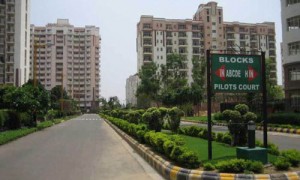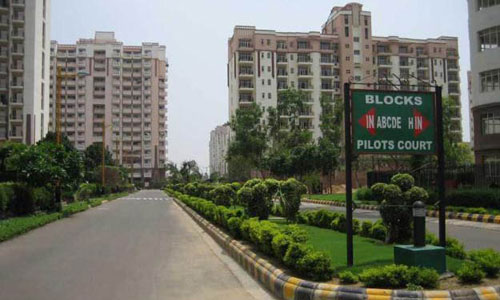 RICS has released its research report ‘Real Estate and Construction Professionals in India by 2020’. Given the potential future growth of the real estate, construction and infrastructure sectors, the industry is believed to be facing a considerable shortage of manpower, which may impede India’s growth aspirations.
RICS has released its research report ‘Real Estate and Construction Professionals in India by 2020’. Given the potential future growth of the real estate, construction and infrastructure sectors, the industry is believed to be facing a considerable shortage of manpower, which may impede India’s growth aspirations.
With this background, RICS commissioned this research to study the demand of real estate and construction professionals over the next decade, in light of the current supply of skilled professionals employed in these sectors, and resulting gap if any, both in quantitative as well as qualitative terms.
The research analyses the future contribution of built environment in India’s economic growth, population trends and corresponding potential demand for real estate space and infrastructure. It further analyses the types of professionals and the skills that will be required which is covered as demand and supply of core professions of civil engineering, architecture and planning; non core professions and new specialized professions that are emerging in the fast paced and increasingly complex built environment.
Population Projections in 2020
By 2020, India’s population is estimated to increase to 1.38 billion, with 500 million (36%) of urban population, which is estimated to generate unprecedented demand for quality real estate and infrastructure. Approximately 123 million of additional urban population by 2020 is likely to require professional assistance for construction of houses. This will lead to a whopping 95 billion sq ft of potential demand of real estate space across residential, retail, commercial, industrial and civil amenities over 2010-20. This would mean an average demand of 8.7 billion sq ft that potentially needs to be built every year.
Supply in built environment as of 2011
The research has highlighted that as of 2011, the supply of professionals in built environment comprises of nearly 50 million people, of which only 2 million are professionally qualified (across core and non core professionals) while the remaining are primarily unskilled workers.
Demand and Supply assessment of professionals required by 2020
There is a demand-supply gap in the range of 82-86% in the core professions group comprising of civil engineers, architects and planners which are the foundation of technical skills. To deliver potential real estate space and planned infrastructure, India would need nearly 4 million civil engineers, 396,000 architects and 119,000 planners on an average, over the next decade. However the corresponding average supply available would only be 642,000 civil engineers, 65,000 architects and 18,000 planners.
A sustained period of shortfall in annual supply, coupled with an increasing year on year demand, could result in a cumulative demand of nearly 45 million core professionals, over 2010-20, with a cumulative demand-supply gap of approximately 44 million core professionals, over the same period.
Demand and Supply Gap Assessment – Core professionals (in ‘000s)
 The estimated supply of non core professionals in the built environment sector is nearly 3 times the supply of core professionals, demonstrating that ‘non core professionals’ are being drawn into the sector to compensate for the shortage of ‘core professionals’. However without sector specific training, they fall short of the desired skill sets will needs to be trained on the real estate, construction and infrastructure sectors, to convert them into ‘specialized’ professionals.
The estimated supply of non core professionals in the built environment sector is nearly 3 times the supply of core professionals, demonstrating that ‘non core professionals’ are being drawn into the sector to compensate for the shortage of ‘core professionals’. However without sector specific training, they fall short of the desired skill sets will needs to be trained on the real estate, construction and infrastructure sectors, to convert them into ‘specialized’ professionals.
Cumulative supply of non core professionals in built environment (in ‘000s)
 New demand for specialized professions is now emerging in order to enhance professional expertise and improve productivity in this fast paced sector. These are Valuation, Quantity surveying, Facilities management and Sustainable development.
New demand for specialized professions is now emerging in order to enhance professional expertise and improve productivity in this fast paced sector. These are Valuation, Quantity surveying, Facilities management and Sustainable development.
Estimated demand of specialised professionals in built environment (in ‘000s)
 Releasing the report, Sachin Sandhir, Managing Director, RICS South Asia said, “The RICS Real Estate and Construction Professionals in India by 2020 report is meant to be a wake-up call for industry and government alike. The contribution of the built environment on the economy accounts for approx 17.5% of GDP (2009-10). With a projected area requirement of almost 95 billion sq. feet between 2010-20 across the real estate sector, manpower requirements becomes one of the most critical elements that will drive this growth. Given that the industry is already beginning to be impacted by a demand-supply mismatch, the projected shortage of various built environment professionals becomes a cause for significant concern as it threatens the sustainability of high growth sectors of real-estate, construction and infrastructure. The urgent need-of-the-hour is for all stakeholders across Government, academia and industry to formulate remedial measures that help increase new supply and up-skilling of the existing workforce.”
Releasing the report, Sachin Sandhir, Managing Director, RICS South Asia said, “The RICS Real Estate and Construction Professionals in India by 2020 report is meant to be a wake-up call for industry and government alike. The contribution of the built environment on the economy accounts for approx 17.5% of GDP (2009-10). With a projected area requirement of almost 95 billion sq. feet between 2010-20 across the real estate sector, manpower requirements becomes one of the most critical elements that will drive this growth. Given that the industry is already beginning to be impacted by a demand-supply mismatch, the projected shortage of various built environment professionals becomes a cause for significant concern as it threatens the sustainability of high growth sectors of real-estate, construction and infrastructure. The urgent need-of-the-hour is for all stakeholders across Government, academia and industry to formulate remedial measures that help increase new supply and up-skilling of the existing workforce.”
Reasons for this shortage
There are a number of factors responsible for resulting in these shortages in professionals and the same factors are likely to contribute to this continued shortage in future if remedial measures are not taken to address these shortages. These are summarised as—
- Inadequate number of colleges/seats
- Orthodox academic structures with limited room to adapt to innovation and market needs
- Curriculum does not explicitly capture emerging specialised skill set requirements
- Lack of adequately trained faculty that is aware of latest and emerging technologies
- Failure to keep up-to date with constant introduction of new technologies
- Availability of better pay scales in other fields and countries
- Lack of adequate number of training programs for professionals already in the discipline
- Lack of formalized incentive structures for these professionals to work towards their continued professional enhancement
Dr. (Mrs) Isher Judge Ahluwalia, Chairperson, Board of Governors, ICRIER and Chairperson, High Powered Committee on Urban Infrastructure, Ministry of Urban Development, while addressing those present said, “I really welcome this report and I believe it’s very timely. Over the last 3 years while working on urban renewal issues, a mega challenge that has come to light is the lack of capacity at every level – of architects, chartered accountants, land valuers, planners and many more. In fact some of the more progressive states that have been taking active steps on urban renewal and planning are those who have been able to address their capacity challenges, improve governance mechanisms and put in place sustainable PPP models. This has also enabled better financial viability for projects and subsequently improved public service delivery. I would therefore request all relevant stakeholders including the government to come together to create a roadmap that addresses this capacity challenge to ensure that the sector is able to ensure improved service delivery over the coming years.”
Dr. Sudhir Krishna, Secretary, Ministry of Urban Development said, “I am extremely happy that RICS has put together this very timely report on the skills gaps affecting the real estate and construction sectors. I believe we have all been very conservative in both, our projections for the future and therefore also in terms of planning for the task ahead. The real-estate sector is an important sub-set of the overall infrastructure sector and therefore of the economy and so we need to be extremely cognizant of the deficits that threaten the sustainable growth and development of the sector. I believe that the educational curricula also need to be suitably modified to manage professional challenges better. We will use this report to further augment the roadmap for capacity building that my ministry is working on and I look forward to all such help to enable us develop an implementable action plan.”
The Implications
In relation to the predicted higher economic growth in the coming years, these skill-set shortages are only likely to be exacerbated in the future unless remedial measures towards increasing new supply and up-skilling existing workforce are not taken on a priority basis. If we were to continue with an as-is scenario, with current productivity and skill sets possessed by core professionals, and where capacity of educational institutes is not increased from the actual capacity in 2009, by 2020, India will need over 5 million civil engineers, architects and planners but will be able to produce less than 1 million of these professionals.
This demand-supply gap of professionals is therefore poised to become a threat for the high growth of real estate, construction and infrastructure sectors in India. While the potential impact of skill shortages on the India economy and the built environment is hard to quantify, it certain to result in:
- Recruitment difficulties = firms will find it more difficult to recruit and retain staff
- Increased cost of human resource, adversely impacting development costs and profitability of operations
- Inability to complete tasks efficiently in a time-bound manner = lower production levels and delay of new projects = economic loss
- Skill gaps in domestic manpower = import of talent at higher costs
- Sub-standard quality of construction as compared to the global products = accidents and man made disasters






1 Comment
Thanks for this true information about this because India to face real estate and construction crisis with demand-supply gap of 44 million core professionals by 2020.